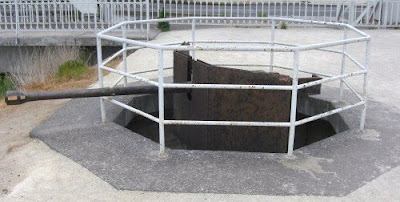In the midst of trying to sort out the last minute problems that always arise during the week before COW (e.g. 'Why do I have to share a room?'; 'Can I have my session moved from Friday evening to Sunday afternoon so that I can go to Fred's session about ...'), the two conference organisers – Tim Gow and myself – are also trying to prepare everything that we need to get ready for the sessions we will be putting on.
In Tim's case this has involved helping to plan the new Plenary Game (and making a large number of cardboard rifles with fixed baynots [so called because they are not bayonets!]) as well as the three other session he is putting on. For once I have confined myself to a single session about Joseph Morschauser's life and wargames, and by now I should have nothing left to prepare ... but I still do!
The problem is that I keep remembering things that are not on my 'to do for COW' list. For example this morning I was checking that I had all the bits and pieces I need so that session attendees will have the opportunity to try out Morschauser's 'Frontier' rules. I seemed to have everything in place ... but then realised that I had no hills! I could not do anything about it at the time as I had to go to work, but this has now been added to my 'to do' list for tomorrow.
I also noticed that the Chessex Battlemats that I had so lovingly stored in an A1-size art folder so that they could be kept flat were now at the bottom of the folder in a sort of folded, crumpled heap. The art folder kept them flat as long as it was kept flat, but as soon as I stood it upright the weight of the Battlemats was too much for the thin plastic the folder was made from and they folded in upon themselves. The only solution was to roll them round a large diameter tube ... but I did not have one, so it was off to Staples after work to buy one!
With a bit of luck I should be able to get everything left on my 'to do' list done tomorrow ... but as I was leaving work I got the news that we are going to have a visit from Ofsted (the Office for Standards in Education) tomorrow ... so everything might just have to be put back until Thursday, after which it will be too late to do anything about it.
C'est la vie!
In Tim's case this has involved helping to plan the new Plenary Game (and making a large number of cardboard rifles with fixed baynots [so called because they are not bayonets!]) as well as the three other session he is putting on. For once I have confined myself to a single session about Joseph Morschauser's life and wargames, and by now I should have nothing left to prepare ... but I still do!
The problem is that I keep remembering things that are not on my 'to do for COW' list. For example this morning I was checking that I had all the bits and pieces I need so that session attendees will have the opportunity to try out Morschauser's 'Frontier' rules. I seemed to have everything in place ... but then realised that I had no hills! I could not do anything about it at the time as I had to go to work, but this has now been added to my 'to do' list for tomorrow.
I also noticed that the Chessex Battlemats that I had so lovingly stored in an A1-size art folder so that they could be kept flat were now at the bottom of the folder in a sort of folded, crumpled heap. The art folder kept them flat as long as it was kept flat, but as soon as I stood it upright the weight of the Battlemats was too much for the thin plastic the folder was made from and they folded in upon themselves. The only solution was to roll them round a large diameter tube ... but I did not have one, so it was off to Staples after work to buy one!
With a bit of luck I should be able to get everything left on my 'to do' list done tomorrow ... but as I was leaving work I got the news that we are going to have a visit from Ofsted (the Office for Standards in Education) tomorrow ... so everything might just have to be put back until Thursday, after which it will be too late to do anything about it.
C'est la vie!





































.jpeg)
























